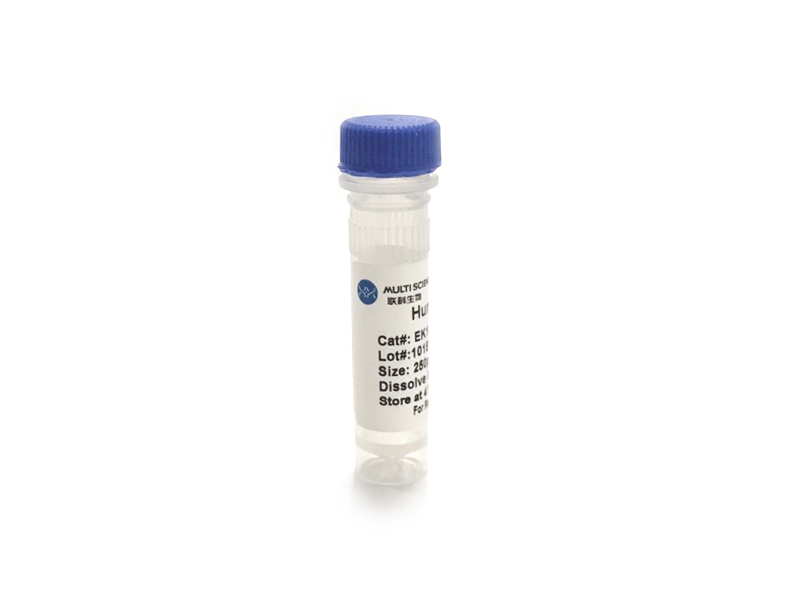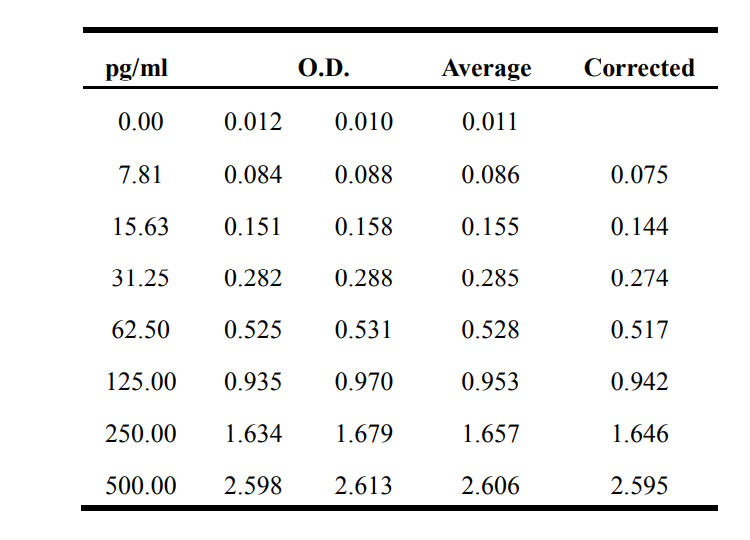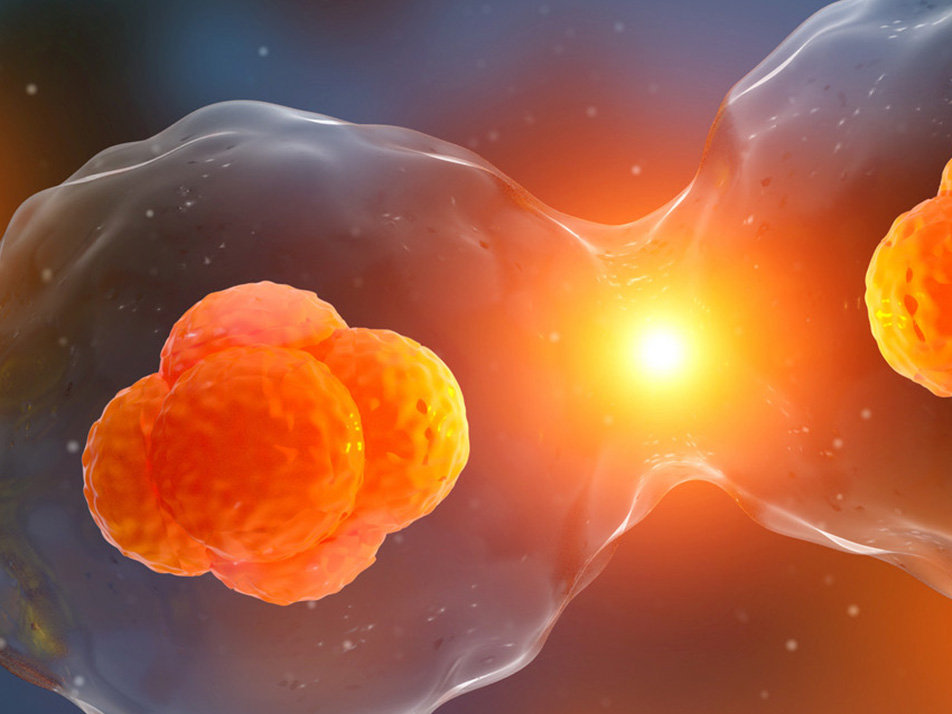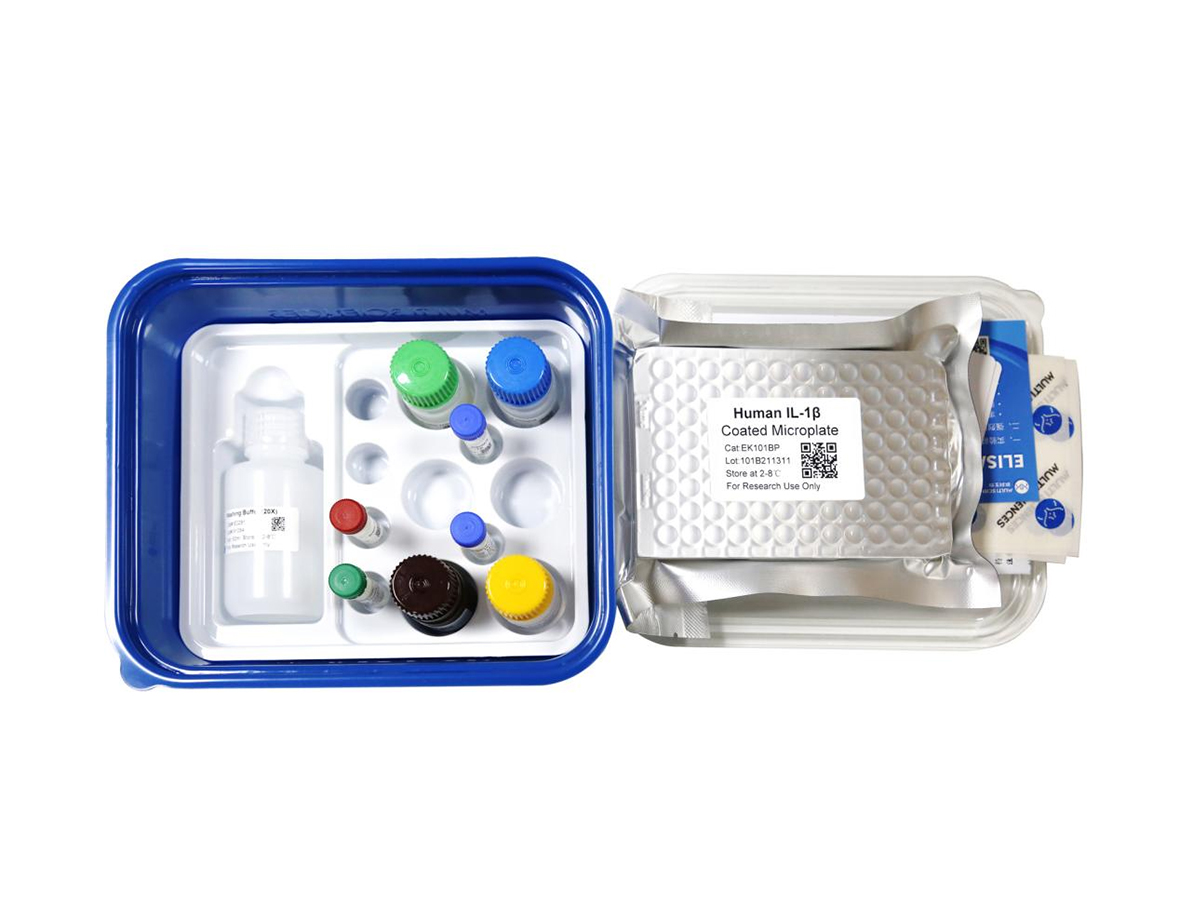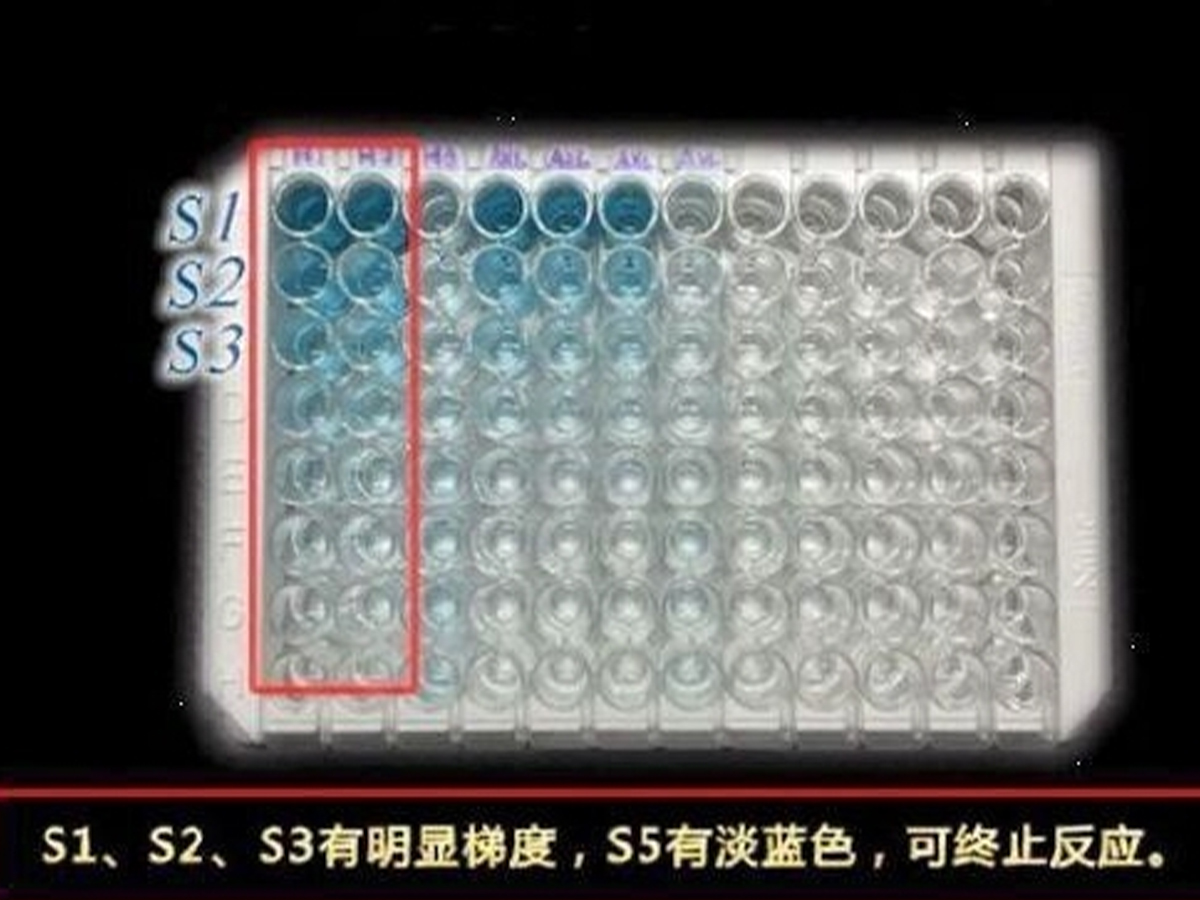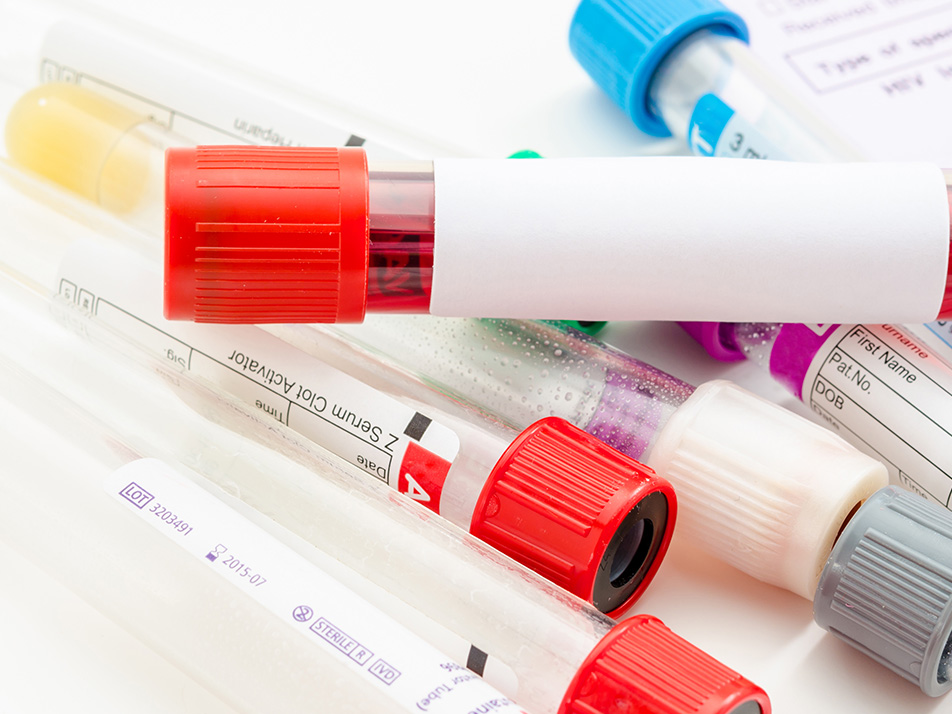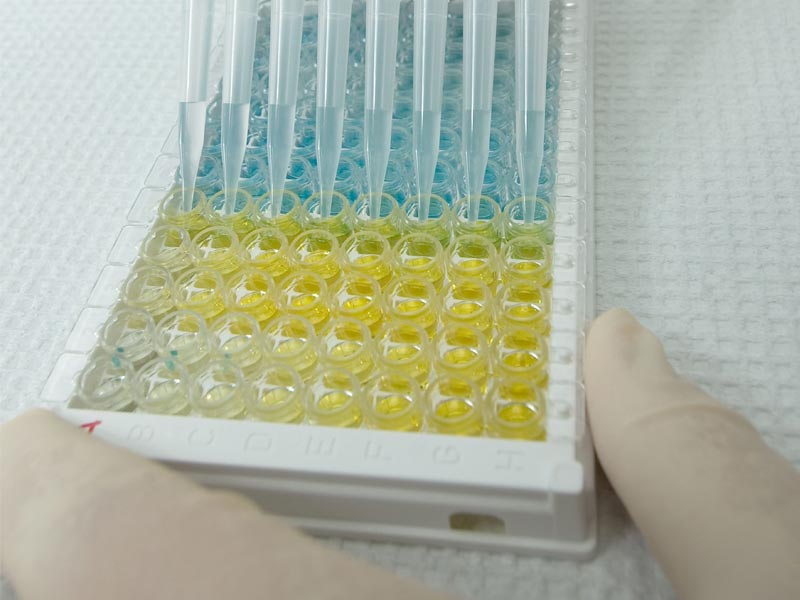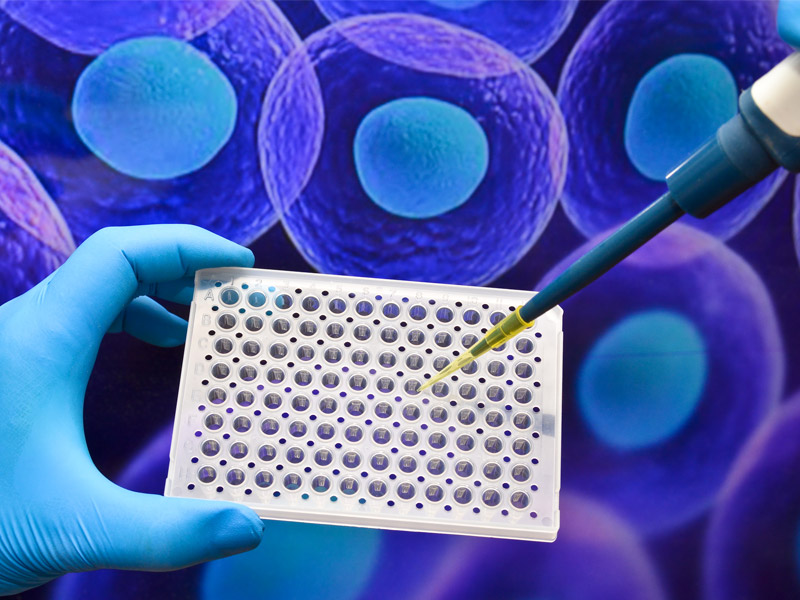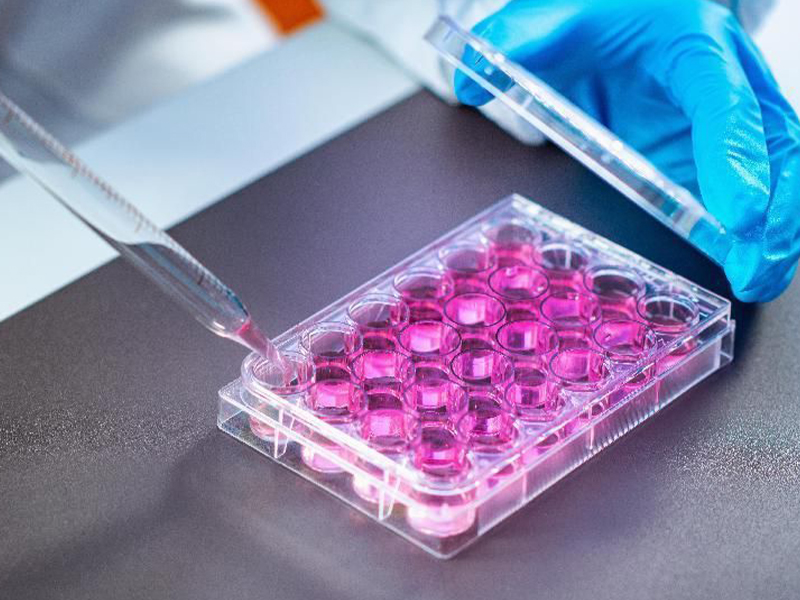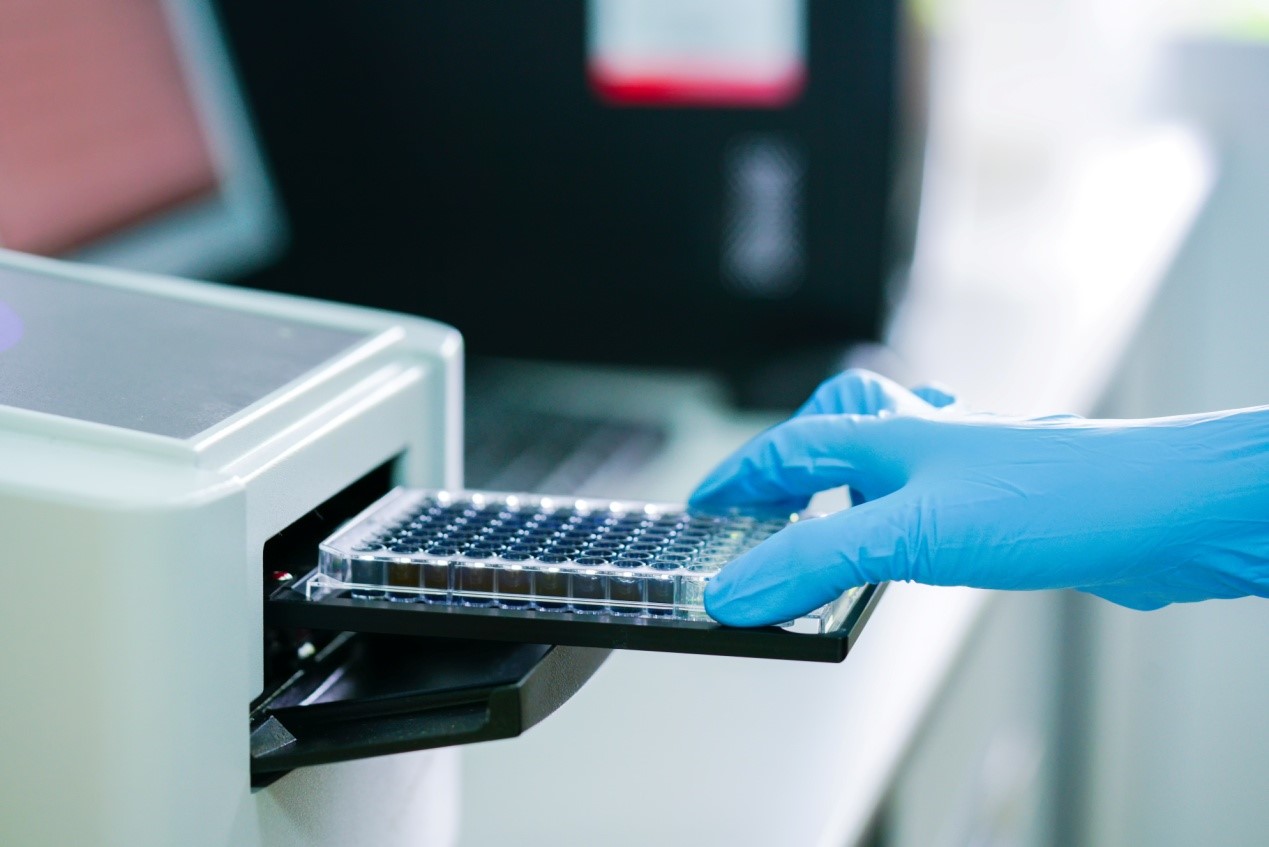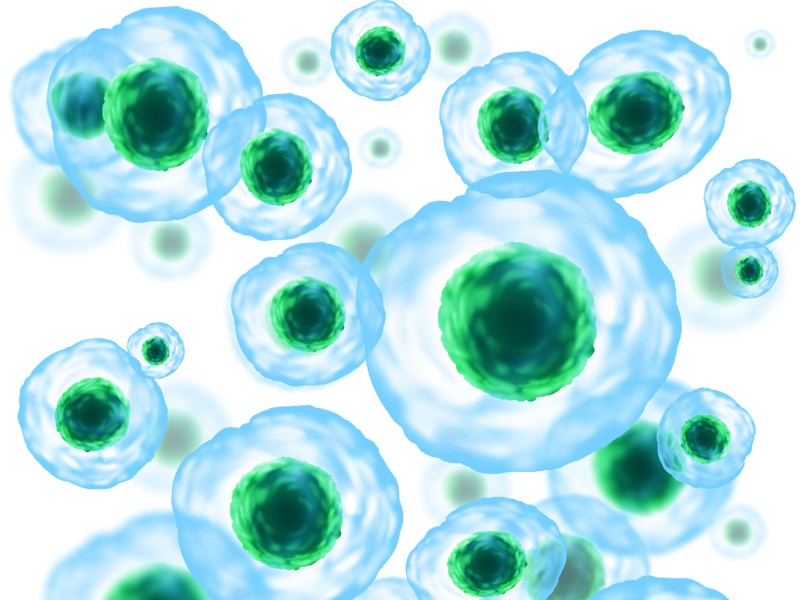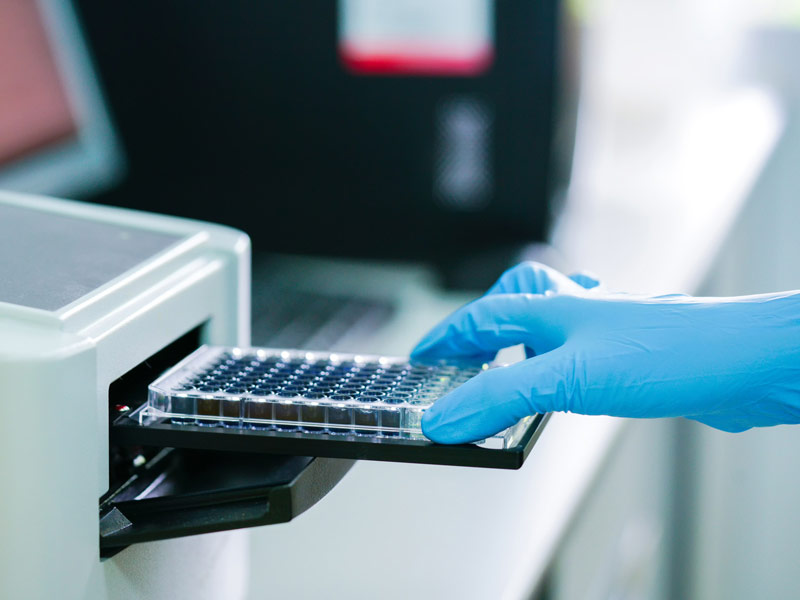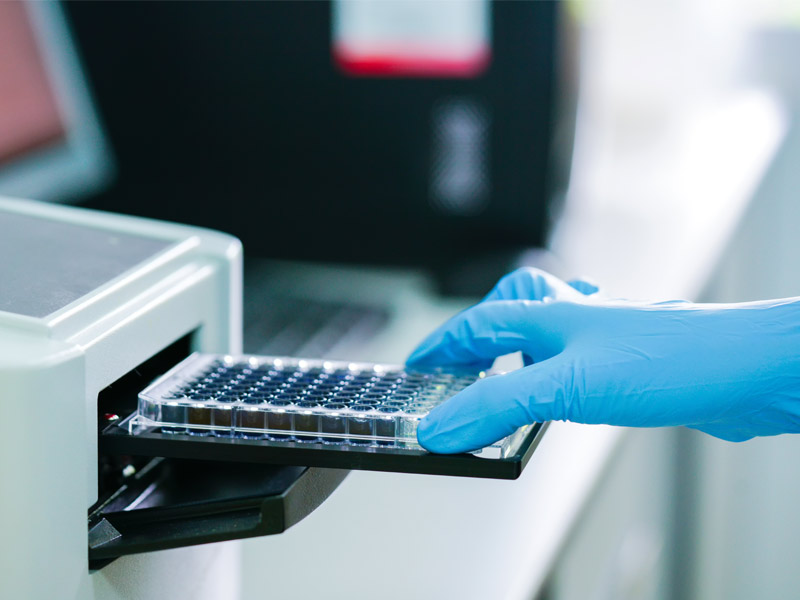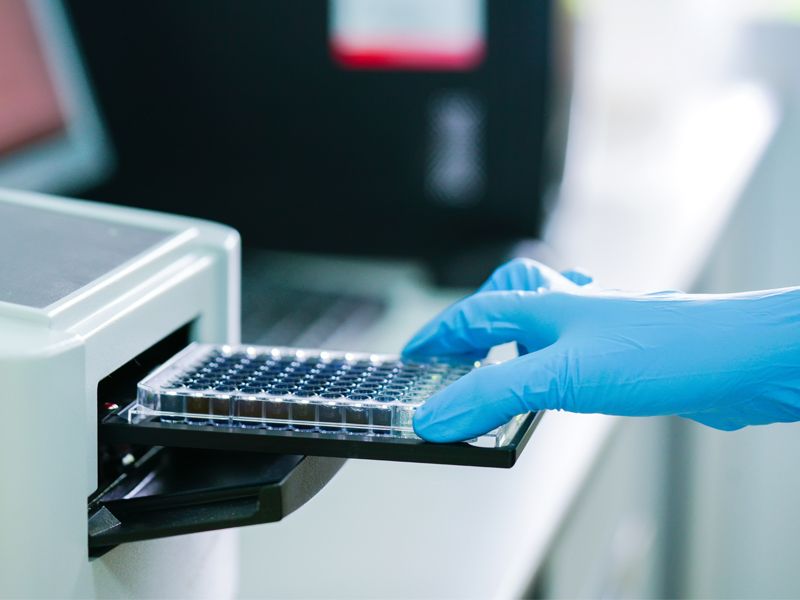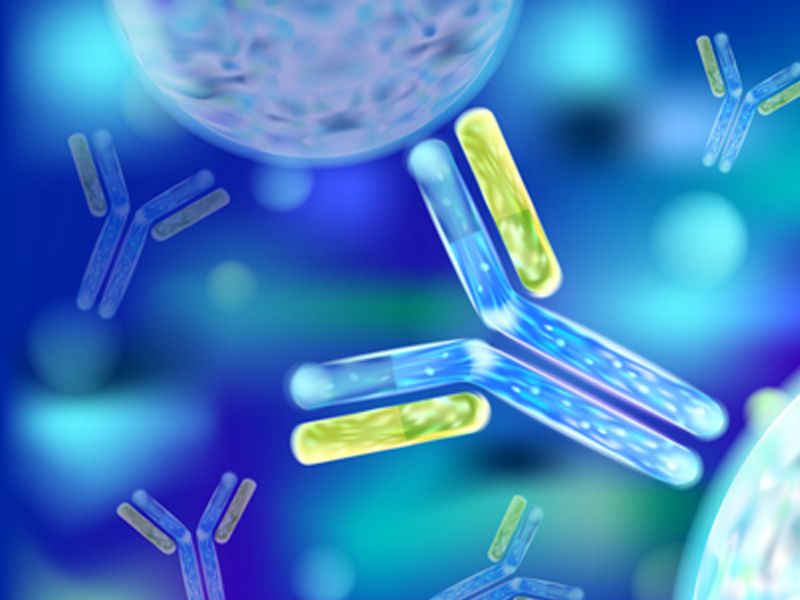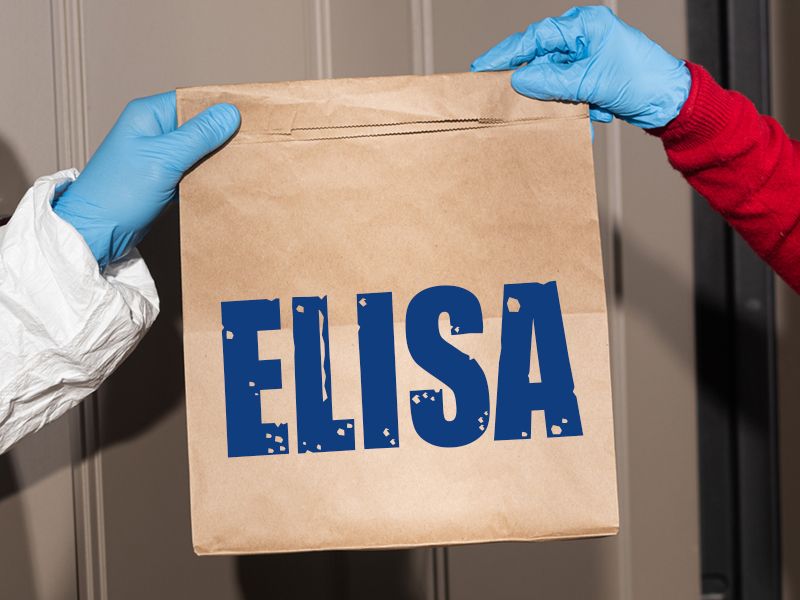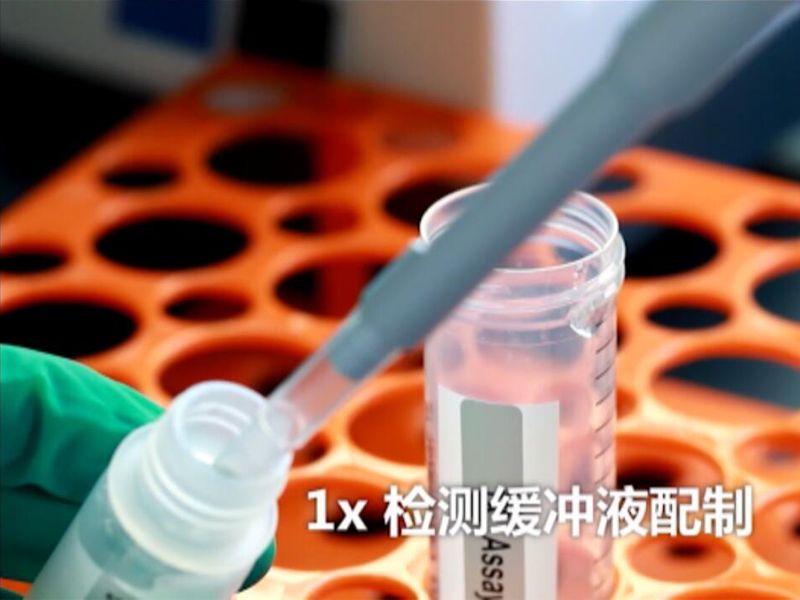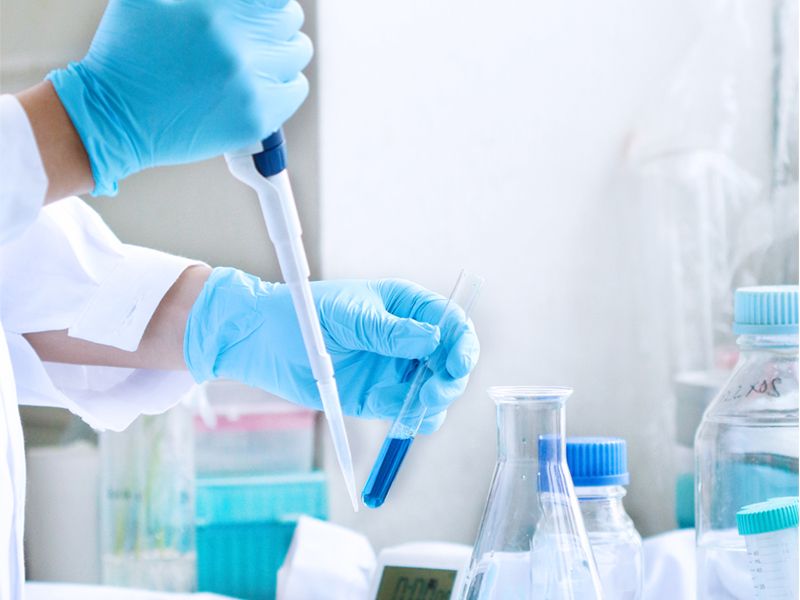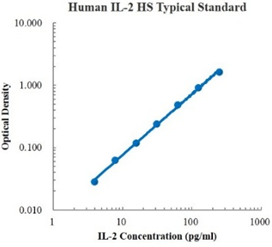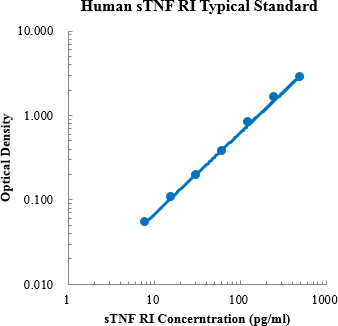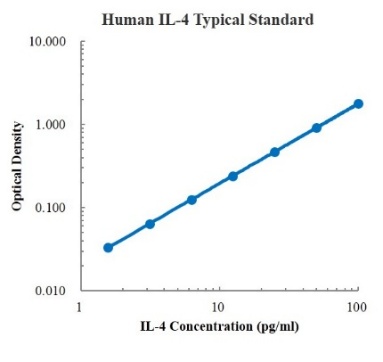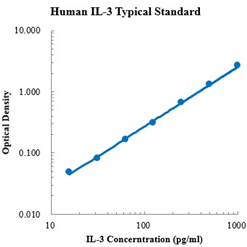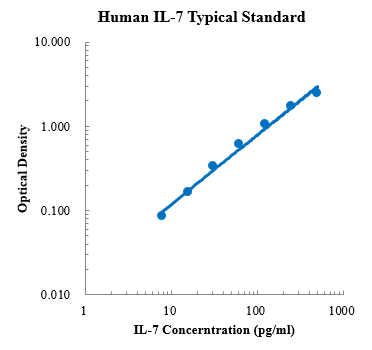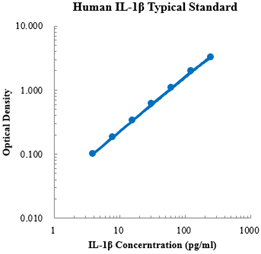Human CXCL9/MIG Standard (人趋化因子CXC配体9 标准品)
¥280.00
描述
文章目录[隐藏]
本产品只包含标准品试剂,如需购买试剂盒请点击下图
-
- EK1143 9 Citations
- FEATURED ELISA KIT, ELISA试剂盒
Human CXCL9/MIG ELISA Kit检测试剂盒(酶联免疫吸附法)
- ¥1,600.00 – ¥2,650.00
| 商品名 |
Human CXCL9/MIG Standard (人趋化因子CXC配体9 标准品) |
|---|---|
| 组分 |
人CXCL9/MIG 标准品 |
| 检测方法 |
双抗夹心法 |
| 样本类型 |
血清,血浆,细胞培养上清及其他生物学样本 |
| 板式 |
管 |
| 保存 |
短期4℃,长期-20℃保存 |
| 运输条件 |
4℃蓝冰运输 |
检测原理:本试剂盒采用双抗体夹心酶联免疫吸附检测技术。特异性抗人CXCL9抗体预包被在高亲和力的酶标板上。酶标板孔中加入标准品、待测样本和生物素化的检测抗体,经过孵育,样本中存在的CXCL9与固相抗体和检测抗体结合。洗涤去除未结合的物质后,加入辣根过氧化物酶标记的链霉亲和素(Streptavidin-HRP)。洗涤后,加入显色底物TMB,避光显色。颜色反应的深浅与样本中CXCL9的浓度成正比。加入终止液终止反应,在450 nm波长(参考波长570 - 630 nm)测定吸光度值。
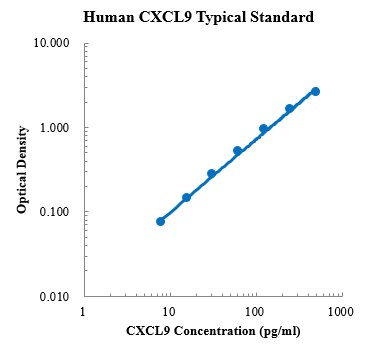
分子信息
CXCL9 分子靶点信息概述
- 分子名:CXCL9, C-X-C motif chemokine ligand 9
- 基因家族:Chemokine ligands
- 别名:SCYB9; Humig; crg-10
- 曾用名:CMK; MIG
- 全称:monokine induced by gamma interferon; chemokine (C-X-C motif) ligand 9
CXCL9 分子靶点综述
趋化因子CXC配体9(CXCL9),又名γ干扰素诱导的单核因子(MIG),是属于CXC趋化因子家族的一个小分子量细胞因子。它与其它两个CXC趋化因子CXCL10和CXCL11密切相关,它们都是与趋化因子受体CXCR3相互作用来发挥其趋化功能。CXCL9参与Th1型炎症,它有许多功能,主要的功能是化学吸引。活化的B细胞、单核细胞、CD8+记忆性T细胞和CD4+Th1T细胞都可对CXCL9作出应答。CXCL9还可通过作为IL-4/Th2应答的拮抗剂来促进Th1应答,这是通过阻断Th2相关趋化因子(eotaxin)发生的,从而限制Th2的浸润。CXCL9还可通过其延伸的C端展现出直接的抗微生物活性。在造血中,CXCL9参与CD34+干细胞的动员和迁移、抑制红系和髓系细胞集落的形成。
人 Human CXCL9 分子靶点信息
- 分子名:CXCL9, C-X-C motif chemokine ligand 9
- 别称:
- C-X-C motif chemokine 9
- chemokine (C-X-C motif) ligand 9
- CMK
- crg-10
- gamma-interferon-induced monokine
- Humig
- MIG
- monokine induced by gamma interferon
- monokine induced by interferon-gamma
- SCYB9
- small-inducible cytokine B9
- 基因序列:NCBI_Gene: 4283
- 蛋白序列:UniProtKB: Q07325
人 Human CXCL9靶点分子功能(预测)
Enables CXCR3 chemokine receptor binding activity and chemokine activity. Involved in several processes, including adenylate cyclase-activating G protein-coupled receptor signaling pathway; antimicrobial humoral immune response mediated by antimicrobial peptide; and positive regulation of release of sequestered calcium ion into cytosol. Predicted to be located in extracellular region. Predicted to be active in extracellular space. Biomarker of several diseases, including chronic fatigue syndrome; cystic fibrosis; lung disease (multiple); severe acute respiratory syndrome; and thoracic aortic aneurysm.
引用文献统计
该产品被引用的文献总数为:0
暂无相关文献引用。
ELISA标准品操作常见问题查看更多ELISA标准品操作步骤技术文章
查看更多ELISA标准品操作步骤技术文章
操作步骤
文章目录[隐藏]
- ELISA操作常见问题
- 小心!你的 ELISA 试剂盒可能是假的
- 开学学习计划,如何收集ELISA检测样本——细胞
- 开学学习计划,如何选择ELISA试剂盒
- 开学学习计划,ELISA从新手到入门!
- 一文掌握ELISA实验显色判断、数据分析及标曲拟合
- 血清OR血浆,哪个是ELISA的菜
- ELISA通关必备丨数据篇丨标准曲线不佳
- ELISA通关必备丨操作篇丨常见问题及解决方案
- ELISA通关必备丨操作篇丨溶解与稀释标准品
- ELISA通关必备丨样本篇丨不常见样本
- ELISA通关必备丨样本篇丨常见样本丨细胞
- ELISA通关必备丨如何选择试剂盒
- ELISA通关必备丨基础知识
- 真?假?ELISA试剂盒选择要小心
- ELISA常见类型一 | 双抗夹心法,你要的都在这里!
- ELISA常见类型二 | 竞争法,五分钟搞定!
- 叮!联科向您投递了个ELISA实验操作干货包,请查收~
- 【视频】ELISA实验操作步骤演示视频教程
- ELISA 组织样本的处理—大鼠组织
- 【视频】ELISA实验原理与常见问题分析
- 查看更多ELISA操作相关问题
ELISA操作常见问题
查看更多ELISA操作相关问题
引用文献
文章目录[隐藏]
- Cytokine antibody array-based analysis of IL-37 treatment effects in asthma
- Immune infiltration profiling in gastric cancer and their clinical implications
- FABP6 Expression Correlates with Immune Infiltration and Immunogenicity in Colorectal Cancer Cells
- SLC4A4 as a novel biomarker involved in immune system response and lung adenocarcinoma progression
- HIF-1α Mediates Immunosuppression and Chemoresistance in Colorectal Cancer by Inhibiting CXCL9, ?10 and ?11
- The TOPK inhibitor HI-TOPK-032 enhances CAR T-cell therapy of hepatocellular carcinoma by upregulating memory T cells
- Role of Chemotaxis of Vδ2 T Cells to the Synovium in the Pathogenesis of Acute Gouty Arthritis
- CXCL9 may serve as a potential biomarker for primary Sj?gren’s syndrome with extra-glandular manifestations
- NK cell-derived exosomes enhance the anti-tumor effects against ovarian cancer by delivering cisplatin and reactivating NK cell functions
Cytokine antibody array-based analysis of IL-37 treatment effects in asthma
Immune infiltration profiling in gastric cancer and their clinical implications
FABP6 Expression Correlates with Immune Infiltration and Immunogenicity in Colorectal Cancer Cells
SLC4A4 as a novel biomarker involved in immune system response and lung adenocarcinoma progression
HIF-1α Mediates Immunosuppression and Chemoresistance in Colorectal Cancer by Inhibiting CXCL9, ?10 and ?11
The TOPK inhibitor HI-TOPK-032 enhances CAR T-cell therapy of hepatocellular carcinoma by upregulating memory T cells
Role of Chemotaxis of Vδ2 T Cells to the Synovium in the Pathogenesis of Acute Gouty Arthritis
CXCL9 may serve as a potential biomarker for primary Sj?gren’s syndrome with extra-glandular manifestations
NK cell-derived exosomes enhance the anti-tumor effects against ovarian cancer by delivering cisplatin and reactivating NK cell functions

